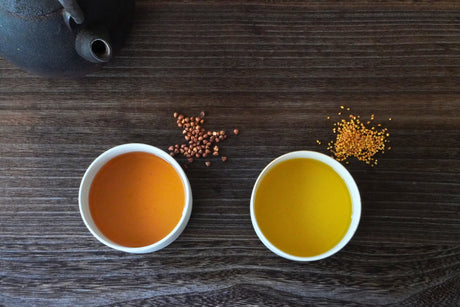
Hakone Tea Exploring 1 : NARAYA CAFE
As autumn deepens, the Kanto region is coming alive in full color with vibrant foliage everywhere. During this beautiful autumn season, we visited Hakone, one of Japan’s most beloved travel destinations....

As autumn deepens, the Kanto region is coming alive in full color with vibrant foliage everywhere. During this beautiful autumn season, we visited Hakone, one of Japan’s most beloved travel destinations....

Have You Heard of “SOBA”? Soba is a plant from the buckwheat family (Polygonaceae, genus Fagopyrum). The seeds from this plant are ground into flour and used to make soba...

Starting at 17:25, the documentary shares the process of making Awa Bancha in Tokushima Prefecture, a type of fermented folk tea made in certain Kamikatsu and Aioi Villages in the region....

Tokushima is a prefecture of Japan located on the island of Shikoku. When one thinks of Japanese tea, Tokushima is probably not the prefecture that comes to mind, especially when one...

by Katrina Wild June 4, 2024 Every three years, Shizuoka Prefecture hosts the World O-CHA Festival, a celebration of tea's rich history, innovation, and diversity. The latest event in...

As the name suggests in Japanese, “kabusecha” which means covered tea is grown by covering the tea leaves with a cloth called kanreisha before they are harvested. This shade growing...

On February 3-4, we visited Akemi Ishimoto, an 87 year old kancha tea farmer who is located in the Southernmost tip of Tokushima Prefecture. You can learn about the kancha...

Shishikuicho city, is in the southernmost district of Tokushima Prefecture, called Kaiyo. As its name Kaiyo (in Japanese: 海陽) suggests in Japanese, it is a "sea town" that is famous for its sea....

As some of you may have been aware, February 6th marked the day of matcha in Japan. In a previous blogpost on Yunomi, we touched on some of the tea...

Setsubun (節分) is a traditional Japanese festival that is held on February 2, 3 or 4, one day before the start of spring, according to the Japanese lunar calendar. The...

The flowers of ume, the Japanese plum, bloom in February and March, announcing the beginning of spring. Around this time many people gather at parks and temples to admire the...

This article covers the Japanese terminology for the main parts of a chasen (the bamboo whisk used to make matcha). While the terminology for the parts of chasen are in...